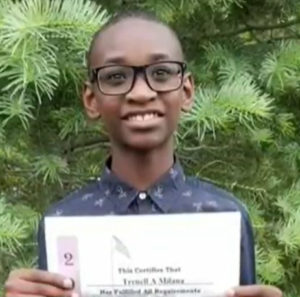Trenell “Tre” Milana, a Richmond-area teen, has a number of learning disabilities including autism. His local school system tried mainstreaming him, but he couldn’t keep up with other students. Despite low grades, the system socially promoted him through the 6th grade.
“With the processing delay, you would tell him something and go onto the next subject, and then the next subject, and all the kids are keeping up but Trenell is still trying to figure out the first thing you told him,” his mother Latoya Milana explained to WWBT television. “When he was in mainstream he would fail; 50s and 60s from November until May.”
In 7th grade, the working single mom decided that something had to change. She enrolled Tre in Virtual Virginia Academy. He thrived. “I think he finished with all A’s and B’s in 7th grade,” she said. “That has never happened with him.”
Tre’s story reflects the experience of just one kid, and one should be careful drawing broader conclusions. With that caveat, permit me to make a few observations.
First (and this hits close to home due to my flogging last year by the autistic-mom Twitter Outrage Mob), mainstreaming may not be the best option for an autistic child. Undoubtedly, every child is unique, but in Tre’s case, taking him out of school removed distractions that hampered his learning.
Second, despite the widespread belief that online learning is inferior to in-person learning, home clearly is a more appropriate learning setting for Tre. Virginians should be open to the possibility that online learning can be beneficial to many other children, depending upon circumstances.
Third, we should consider the possibility that it is easier in an online environment to maintain class discipline. “The teachers have it in a controlled environment,” Milana said. “If the kids are getting rowdy and not paying attention, they shut down the chatbox, shutdown the webcams.” Who benefits the most from this arrangement? Students who otherwise would be subjected to frequent outbursts from problem kids.
Meanwhile, virtual learning has gone mainstream as many school districts have chosen to cope with the COVID-19 epidemic by closing the schools and teaching online. The first few days have been marred by numerous glitches — failure to connect to WiFi, devices not accepting login credentials, and the like — as teachers and students get the technology to work. School systems are far better prepared, however, than they were last spring when they scrambled to convert to online learning. The spring experiment is widely regarded as a flop. This fall the true test begins.



